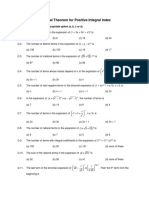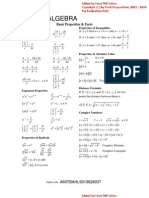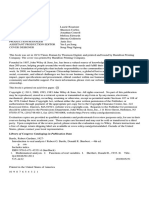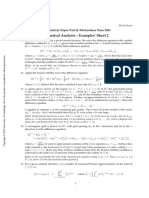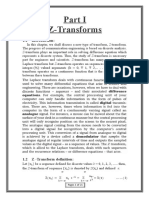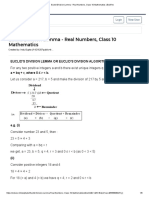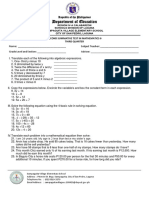0% found this document useful (0 votes)
86 views9 pagesRelations & Functions - Practice Sheet
The document is a practice sheet for a mathematics topic covering relations and functions, containing multiple-choice questions and solutions. It includes questions on properties of relations, domains, ranges, and function types, along with answer keys. The format is structured for students to test their understanding of the subject matter.
Uploaded by
RITIK 7 uCopyright
© © All Rights Reserved
We take content rights seriously. If you suspect this is your content, claim it here.
Available Formats
Download as PDF, TXT or read online on Scribd
0% found this document useful (0 votes)
86 views9 pagesRelations & Functions - Practice Sheet
The document is a practice sheet for a mathematics topic covering relations and functions, containing multiple-choice questions and solutions. It includes questions on properties of relations, domains, ranges, and function types, along with answer keys. The format is structured for students to test their understanding of the subject matter.
Uploaded by
RITIK 7 uCopyright
© © All Rights Reserved
We take content rights seriously. If you suspect this is your content, claim it here.
Available Formats
Download as PDF, TXT or read online on Scribd
/ 9


































